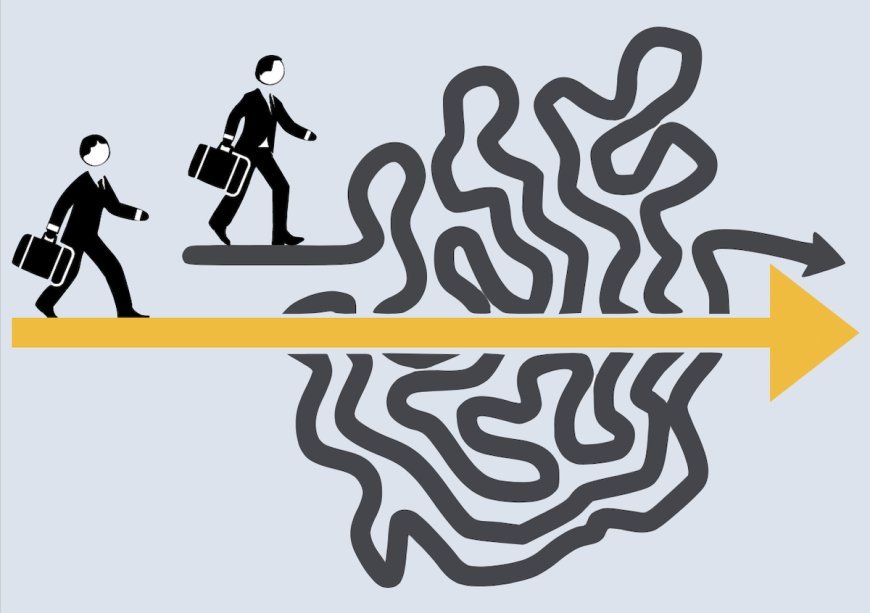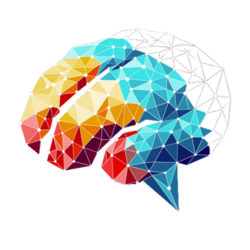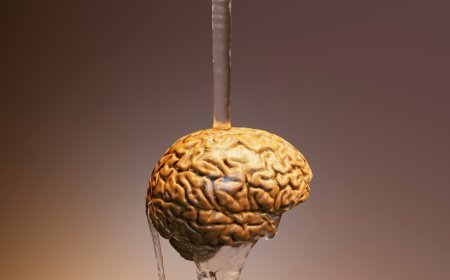Cognitive Biases and Heuristics
In this article we will delve into the nature of cognitive biases and heuristics, explain how they operate, provide concrete examples of their impact on analysis, and, most importantly, offer practical techniques and ideas for unmasking and mitigating their influence, thereby fostering truly enhanced analytical thinking.

Enhancing Rational Thought
Our brains are remarkable organs, capable of incredible feats of computation, pattern recognition, and problem-solving. Yet, despite their power, they are also prone to systematic errors in thinking, particularly when processing information, making judgments, and engaging in complex analysis.
Mental shortcuts, or "heuristics," while often efficient, can lead to predictable deviations from rationality, known as cognitive biases. For intelligence enhancement purposes, understanding these inherent biases is not just an academic exercise; it is a critical step towards more accurate, objective, and effective analysis.
Before diving into biases, it's essential to understand their root: heuristics. Heuristics are mental shortcuts or rules of thumb that our brains use to make quick decisions and judgments, especially when faced with complex information, time constraints, or uncertainty. They are essentially cognitive tools that reduce the effort needed to make decisions. For example, when you quickly decide to trust a smiling face, or assume a well-dressed person is competent, you're using heuristics.
These shortcuts are incredibly useful. They allow us to navigate the world without constantly re-evaluating every piece of information from scratch. Imagine if you had to perform a full logical deduction every time you decided what to eat for lunch or whether to cross the street. Life would be impossibly slow. Heuristics enable rapid processing and action.
However, the very efficiency that makes heuristics so valuable also makes them susceptible to error. When a heuristic leads to a systematic deviation from rationality, it becomes a cognitive bias. The wordings we use, or the way information is presented, can often trigger these heuristic responses, sometimes unintentionally, sometimes manipulatively.
Cognitive Biases: Systematic Errors in Judgment
Cognitive biases are systematic patterns of deviation from norm or rationality in judgment. They are not random errors; rather, they are predictable ways in which human thinking can go awry. For analytical purposes, understanding these biases is paramount, as they can subtly (or overtly) skew data interpretation, problem definition, solution generation, and decision evaluation.
Let's explore some of the most pervasive cognitive biases relevant to analytical tasks:
1. Confirmation Bias
- Explanation: This is perhaps the most famous and insidious bias for any analyst. Confirmation bias is the tendency to search for, interpret, favor, and recall information in a way that confirms one's pre-existing beliefs, hypotheses, or expectations. It's not about being stubbornly resistant to new information, but rather an unconscious filtering process that prioritizes consistency with what we already hold true.
- Impact on Analysis:
- Data Collection: Analysts might subconsciously seek out data sources or methodologies that are likely to support their initial hypothesis, ignoring contradictory sources.
- Data Interpretation: Ambiguous data points might be interpreted in a way that confirms the existing belief, while data that contradicts it is scrutinized more heavily or dismissed as an outlier.
- Hypothesis Testing: Instead of genuinely trying to falsify a hypothesis, analysts might unintentionally design tests or collect evidence primarily to confirm it.
- Examples:
- An intelligence analyst, convinced that a particular country poses a threat, will prioritize reports and signals that confirm this threat, while downplaying or reinterpreting those that suggest a less hostile intent. Their analytical wordings in reports might emphasize supporting details.
- A financial analyst, believing a stock will rise, will focus on positive news articles and analyst reports, even if there are equally strong negative indicators from other sources.
- A researcher reviewing literature for their thesis might disproportionately cite studies that support their theory, neglecting equally valid studies that present alternative explanations.
- Wordings that Signal/Trigger: "As I suspected...", "This just proves my point...", "See, I told you..."
2. Anchoring Bias (or Anchoring Effect)
- Explanation: Anchoring bias is the tendency to rely too heavily on the first piece of information offered (the "anchor") when making decisions, even if that information is arbitrary or irrelevant. Subsequent judgments and estimations are then adjusted around this anchor, but the adjustment is usually insufficient.
- Estimation: Initial numerical estimates (e.g., project costs, market size, risk probabilities) can unduly influence subsequent, more detailed analyses, even if the initial anchor was a wild guess.
- Negotiation: The first offer made in a negotiation can set a powerful anchor, influencing the final outcome even if it's an extreme starting point.
- Diagnostic Reasoning: An initial diagnosis or assessment can serve as an anchor, making it difficult to shift to an alternative explanation even with new evidence.
- Examples:
- When asked to estimate the population of Turkey, people who were first asked "Is it more or less than 50 million?" gave significantly lower estimates than those who were first asked "Is it more or less than 100 million?" The initial number acted as a powerful anchor.
- A procurement analyst negotiating with a supplier might be anchored by the supplier's initial high price quote, even if they know the item's true market value is much lower, leading to a higher final price than necessary.
- Wordings that Signal/Trigger: "Starting price is...", "Our preliminary estimate is...", "The original forecast was..."
3. Availability Heuristic/Bias
- Explanation: The availability heuristic is a mental shortcut that causes us to overestimate the likelihood or frequency of events that are more easily recalled from memory. If something comes to mind quickly, we assume it happens more often or is more probable. Vivid, recent, or emotionally charged events are more "available" to our minds.
- Impact on Analysis:
- Risk Assessment: Analysts might overestimate the risk of a rare but memorable event (like a plane crash) and underestimate the risk of a common but less vivid one (like a car accident).
- Decision-Making: Decisions can be unduly influenced by the most recent or dramatic information, even if it's not statistically representative.
- Problem Prioritization: Problems that have recently received media attention or have a vivid personal impact might be prioritized over more widespread but less dramatic issues.
- Examples:
- After seeing a few news reports about shark attacks, a person might genuinely believe that shark attacks are a common occurrence, making them fearful of swimming in the ocean, even though the statistical probability is extremely low. The vivid wordings and images of the news reports make the event highly available.
- A project manager, having recently experienced a major software bug in one project, might over-allocate resources to bug testing in subsequent projects, even if the overall historical data suggests this is an infrequent problem.
- Wordings that Signal/Trigger: "I just heard about...", "It reminds me of that time when...", "It's all over the news..."
4. Sunk Cost Fallacy
- Explanation: The sunk cost fallacy is the tendency to continue investing time, money, or effort into a project or decision because of resources already committed ("sunk costs"), even when continuing is clearly not the rational choice. It's the reluctance to abandon a failing venture simply because of past investment.
- Impact on Analysis:
- Project Management: Analysts might rationalize continuing a failing project because so much money/time has already been invested, even if future projections show no return.
- Investment Decisions: Holding onto a losing stock because one has already lost money on it, rather than selling it and cutting losses.
- Personal Decisions: Continuing a bad relationship or a tedious course of study because of the time already invested.
- Examples:
- A movie-goer who has paid for a ticket and finds the film terrible might stay until the end, rationalizing that they "might as well get their money's worth," rather than leaving and saving their time.
- A government agency might continue funding a research program that has shown little promise for years, arguing that abandoning it would mean wasting the millions already spent. The wordings often emphasize "already invested" or "too much to give up now."
- Wordings that Signal/Trigger: "We've already put so much into this...", "It would be a waste to stop now...", "We can't just throw away all that effort..."
5. Framing Effect
- Explanation: The framing effect describes how people react to a particular choice depending on how it is presented or "framed." Choices can be framed to emphasize positive or negative aspects of the same information, significantly influencing decision-making.
- Impact on Analysis:
- Risk Perception: A decision framed in terms of potential gains (e.g., "saves 200 lives") is often perceived differently than one framed in terms of equivalent losses (e.g., "400 people will die").
Policy Evaluation: The same policy might be supported or rejected based on whether its outcomes are described using positive or negative wordings. - Data Presentation: The way an analyst chooses to present data (e.g., percentages vs. absolute numbers, positive vs. negative framing) can inadvertently bias the interpretation of others.
- Risk Perception: A decision framed in terms of potential gains (e.g., "saves 200 lives") is often perceived differently than one framed in terms of equivalent losses (e.g., "400 people will die").
- Examples:
- A medical treatment framed as having a "90% success rate" is perceived more positively than one framed as having a "10% failure rate," even though they convey the same information.
- Survey questions framed to elicit specific responses (e.g., "Do you support the government's courageous efforts to protect our children?" vs. "Do you support government interference in parental rights?").
- Wordings that Signal/Trigger: "X% success rate" vs. "Y% failure rate," "gain" vs. "loss," positive vs. negative connotations in descriptive wordings.
Cognitive biases and heuristics are an inherent part of the human cognitive landscape. They are not signs of intellectual weakness but rather a consequence of our brains' incredible capacity for efficiency. However, for anyone striving for enhanced analytical capabilities, understanding these systematic errors is paramount. By recognizing the wordings that signal them, by actively implementing techniques like seeking disconfirming evidence, using structured analytical methods, and embracing diverse perspectives, we can significantly mitigate their distorting effects. The goal is not to eliminate bias entirely, but to become more aware of our own mental processes, thereby making more informed, objective, and ultimately more intelligent decisions. This continuous journey of self-awareness and methodological rigor is what truly elevates analytical excellence.
What's Your Reaction?
 Like
0
Like
0
 Dislike
0
Dislike
0
 Love
0
Love
0
 Funny
0
Funny
0
 Angry
0
Angry
0
 Sad
0
Sad
0
 Wow
0
Wow
0





















